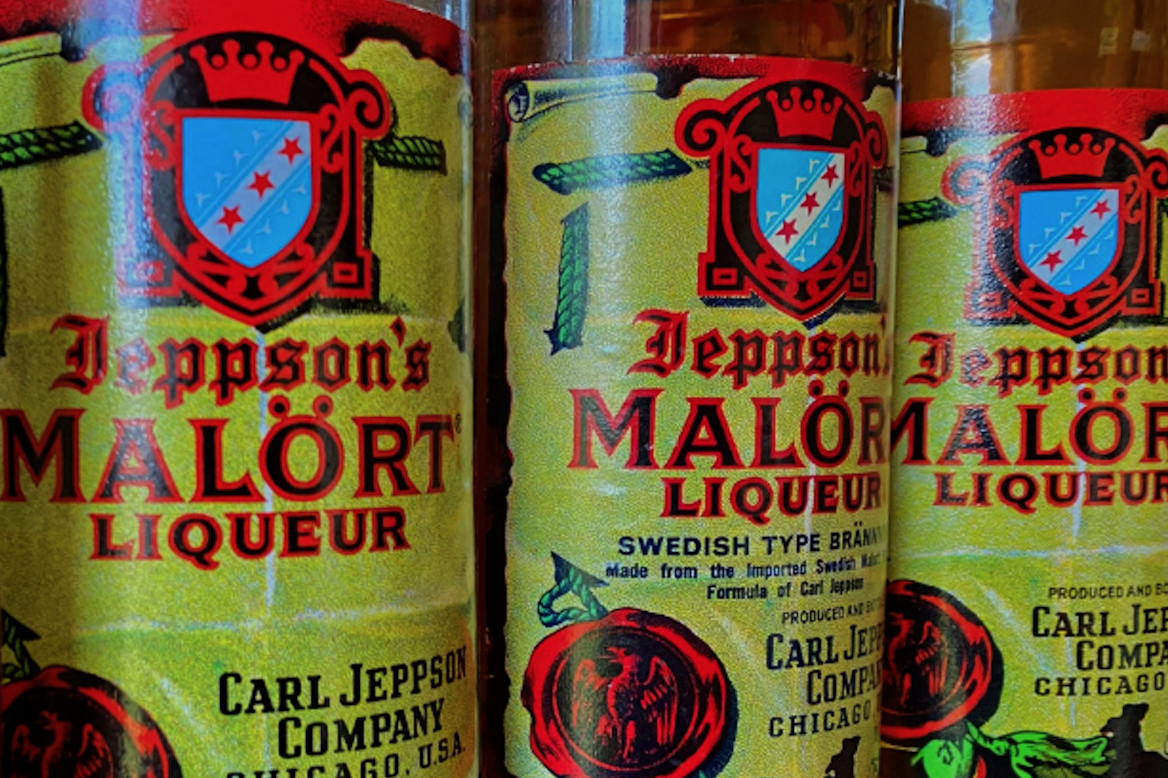Jeppson’s Malört, a bitter liqueur that has become a cultural icon in Chicago for the past decade, is the creation of Swedish immigrant Carl Jeppson. During Prohibition in the 1920s, Jeppson began distilling Malört in Chicago. It was initially marketed as a medicinal tonic, but Malört soon gained a reputation for its unique flavor and became a popular after-dinner drink.
Malört has an extremely bitter taste similar to absinthe, and while a customer base was developed, it never really became popular. For decades, bottles of Malört sat on the back shelves of VFW halls and dive bars. So, how did a bitter tasting liquor that some compare to gasoline or turpentine become a cultural phenomenon in Chicago?
The rise of Malört can be traced to the late 2000s to Sam Mechling, a bouncer at a wine bar in Chicago who had no connection with the Jeppson Company. After being dared to try the drink, Mechling introduced the spirit to everyone he could find. He was obsessed with seeing people’s first reactions, which have become known as the ‘Malört face.’ Mechling began hosting Malört-themed trivia nights and comedy shows at bars, and he also created social media accounts and documented people’s reactions to the drink.
When Mechling began selling T-shirts and popularity continued to soar, it caught the attention of Patty Gabelick, the brand’s owner at the time. Any initial differences were quickly hashed out by both parties, as Gabelick ended up offering Mechling a job with the company. Mechling continued to host events, and sales of Malört continued to soar for the next decade.
Chicago’s DH Distillery bought the company in 2018 when Gabelick retired. Production of Malört, which had moved to Florida in the late 1980s, was returned to Chicago by the new owners in 2019. From 2007 to 2022, shots of Malört that were sold in Chicago rose from 400,000 to 7.9 million.
Despite its reputation for being a difficult spirit to drink, Malört can be enjoyed as a mixer in a cocktail to cut down on the bitter taste. The drink is sometimes referred to as the ‘Chicago handshake’ because it is often given as a gesture of goodwill between friends. The Chicago flag is often associated with Malört, and many bars and restaurants in the city display the flag alongside a bottle of the spirit. The Nisei Lounge in Wrigleyville is a popular watering hole for Malört lovers, and the bar has a Malört Club where members can earn rewards for drinking the bitter beverage.
Mechling has moved on and now heads his own marketing firm in Ohio, but the fandom and popularity of Malört continue today. Over the last five years, Malört went from being only being available in Illinois, Wisconsin, Indiana, and Louisiana to being sold across 30 states. Malört-themed merchandise is available for purchase, and tattoo parlors across Chicago are busy with requests for tattoos of the drink’s iconic bottle. And yes, there is even an unofficial Malört 5K that has runners taking shots during the race.
